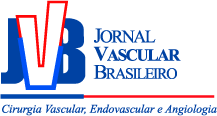Effects of low-level laser therapy on the progress of wound healing in humans: the contribution of in vitro and in vivo experimental studies
Adeir Moreira Rocha Júnior; Beatriz Julião Vieira; Luís Carlos Ferreira de Andrade; Fernando Monteiro Aarestrup
Abstract
Keywords
References
Snyder RJ. Treatment of nonhealing ulcers with allografts. Clin Dermatol.. 2005;23:388-95.
Sugrue ME, Carolan J, Leen EJ, Feeley TM, Moore DJ, Shanik GD. The use of infrared laser therapy in the treatment of venous ulceration. Ann Vasc Surg.. 1990;4:179-81.
Chromey PA. The efficacy of carbon dioxide laser surgery for adjunct ulcer therapy. Clin Podiatr Med Surg.. 1992;9:709-19.
Nussbaum EL, Zuylen JV, Baxter GD. Specification of treatment dosage in laser therapy: unreliable equipment and radiant power determination as confounding factors. Physiother Can.. 1999:157-167.
Rocha Jr. AM, de Oliveira RG, Farias RE, de Andrade LCR, Aarestrup FM. Modulation of fibroblast proliferation and inflammatory response by low-intensity laser therapy in tissue repair process. An Bras Dermatol.. 2006;81:150-6.
Economic consequences of diabetes mellitus in the U.S in 1997: American Diabetes Association. Diabetes Care. 1998;21:296-309.
Pedrosa HC. Pé diabético: aspectos histopatológicos, tratamento e prevenção. Rev Bras Neurol Psiquiatr.. 1997;1:131-5.
Ramos-e-Silva M, Ribeiro de Castro MC. New dressings, including tissue-engineered living skin. Clin Dermatol.. 2002;20:715-23.
Sheridan RL, Thompkins RG. What's new in burns and metabolism. J Am Coll Surg.. 2004;198:243-63.
Contran RS, Kumar V, Collins T. Robbins. Patologia estrutural e funcional. 2001:44-100.
Mandelbaum SH, Di Santis EP, Mandelbaum MHS. Cicatrização: conceitos atuais e recursos auxiliares: parte I. An Bras Dermatol.. 2003;78:393-408.
Tanaka A, Hatoko M, Tada H, Iioka H, Niitsuma K, Miyagawa S. Expression of p53 family in scars. J Dermatol Sci.. 2004;34:17-24.
Silva EC, Filho AH, Musskopf DE. Radiação laser. Manual de recursos terapêuticos. 1998:17-35.
Tavares MR, Mazzer N, Patorello M. Efeito do laser terapêutico na cicatrização tendinosa: estudo experimental em ratos. Fisioter Bras.. 2005;6:96-100.
Karu T, Pyatibrat L, Kalendo G. Irradiation with He-Ne laser increases ATP level in cells cultivated in vitro. J Photochem Photobiol B.. 1995;27:219-23.
Herrero C. Los efectos terapeuticos. Bol Sociedad Española Láser Médico Quirúrgico.. 1988;15:22-6.
Bibikova A, Belkin V, Oron U. Enhancement of angiogenesis in regenerating gastrocnemius muscle of the toad (Bufo viridis) by low-energy laser irradiation. Anat Embryol. 1994;190:597-602.
Mester AF, Mester A. Wound healing. Laser Ther.. 1989;1:7-15.
Hopkins JT, McLoda TA, Seegmiller JG, Baxter GD. Low-level laser therapy facilites superficial wound healing in humans: a triple-blind, sham-controlled study. J Athl Train.. 2004;39:223-9.
Bagnato VS. Os fundamentos da luz laser. Fís Esc.. 2001;2:4-9.
Catão MHCV. Os benefícios do laser de baixa intensidade na clínica odontológica na estomatologia. Rev Bras Patol Oral.. 2004;3:214-8.
Dallan LAO, Oliveira SA. Cirurgia de revascularização transmiocárdica a laser de CO2. Rev Bras Cir Cardiovasc.. 2000;15:89-104.
Gomez-Villamandos RJ, Santisteban Valenzuela JM, Ruiz Calatrava I, Gomez-Villamandos JC, Avila Jurado I. He-Ne laser therapy by fibroendoscopy in the mucosa of the equine upper airway. Lasers Surg Med.. 1995;16:184-8.
Weis LC, Arieta A, Souza J, Guirro RRJ. Utilização do laser de baixa potência nas clínicas de fisioterapia de Piracicaba, SP. Fisioter Bras.. 2005;6:124-9.
Kolárová H, Ditrichová D, Wagner J. Penetration of the laser light into the skin in vitro. Lasers Surg Med.. 1999;24:231-5.
Parizotto NA, Baranauskas V. Structural analysis of collagen fibrils after HeNe laser photostimulated regenerating rat tendon. Proceedings. 1998:66.
Gogia PP, Hurt BS, Zirn TT. Wound management with whirlpool and infrared cold laser treatment. A clinical report. Phys Ther.. 1988;68:1239-42.
Lundeberg T, Malm M. Low-power HeNe laser treatment of venous leg ulcers. Ann Plast Surg.. 1991;27:537-9.
Allendorf JD, Bessler M, Huang J. Helium-neon laser irradiation at fluences of 1, 2, and 4 J/cm2 failed to accelerate wound healing as assessed by wound contracture rate and tensile strength. Lasers Surg Med.. 1997;20:340-5.
Lucas C, Criens-Poublon LJ, Cockrell CT, de Haan RJ. Wound healing in cell studies and animal model experiments by Low Level Laser Therapy: were clinical studies justified? a systematic review. Lasers Med Sci.. 2002;17:110-34.
Vinck EM, Cagnie BJ, Cornelissen MJ, Declercq HA, Cambier DC. Increased fibroblast proliferation induced by light emitting diode and low power laser irradiation. Lasers Med Sci.. 2003;18:95-9.
Demir H, Balay H, Kirnap M. A comparative study of the effects of electrical stimulation and laser treatment on experimental wound healing in rats. J Rehabil Res Dev.. 2004;41:147-54.
Khadra M, Kasem N, Haanaes HR, Ellingsen JE, Lyngstadaas SP. Enhancement of bone formation in rat calvarial bone defects using low-level laser therapy. Oral Surg Oral Med Oral Pathol Oral Radiol Endod.. 2004;97:693-700.
Pugliese LS, Medrado AP, Reis SR, Andrade Z de A. The influence of low-level laser therapy on biomodulation of collagen and elastic fibers. Pesqui Odontol Bras.. 2003;17:307-13.
Bie RA de, Vet HCW de, Wildenberg FAJM van den, Lenssen TF, Bouter LM, Knipschild PG. Efficacy of laser therapy in ankle sprains: design of a randomised clinical trial. Laser Ther.. 1997;9:165-72.
Gaida K, Koller R, Isler C. Low Level Laser therapy--a conservative approach to the burn scar?. Burns. 2004;30:362-7.
Lucas C, van Gemert MJ, de Haan RJ. Efficacy of low-level laser therapy in the management of stage III decubitus ulcers: a prospective, observer-blinded multicentre randomised clinical trial. Lasers Med Sci.. 2003;18:72-7.
Lagan KM, Mc Donough SM, Clements BA, Baxter GD. A case report of low intensity laser therapy (LILT) in the management of venous ulceration: potential effects of wound debridement upon efficacy. J Clin Laser Med Surg.. 2000;18:15-22.
Hawkins D, Abrahamse H. Effect of multiple exposure of low-level laser therapy on the cellular responses of wounded human skin fibroblasts. Photomed Laser Surg.. 2006;24:705-14.
Byrnes KR, Barna L, Chenault VM. Photobiomodulation improves cutaneous wound healing in an animal model of type II diabetes. Photomed Laser Surg.. 2004;22:281-90.
Houreld N, Abrahamse H. In vitro exposure of wounded diabetic fibroblast cells to a helium-neon laser at 5 an 16 J/cm2. Photomed Laser Surg.. 2007;25:78-84.

